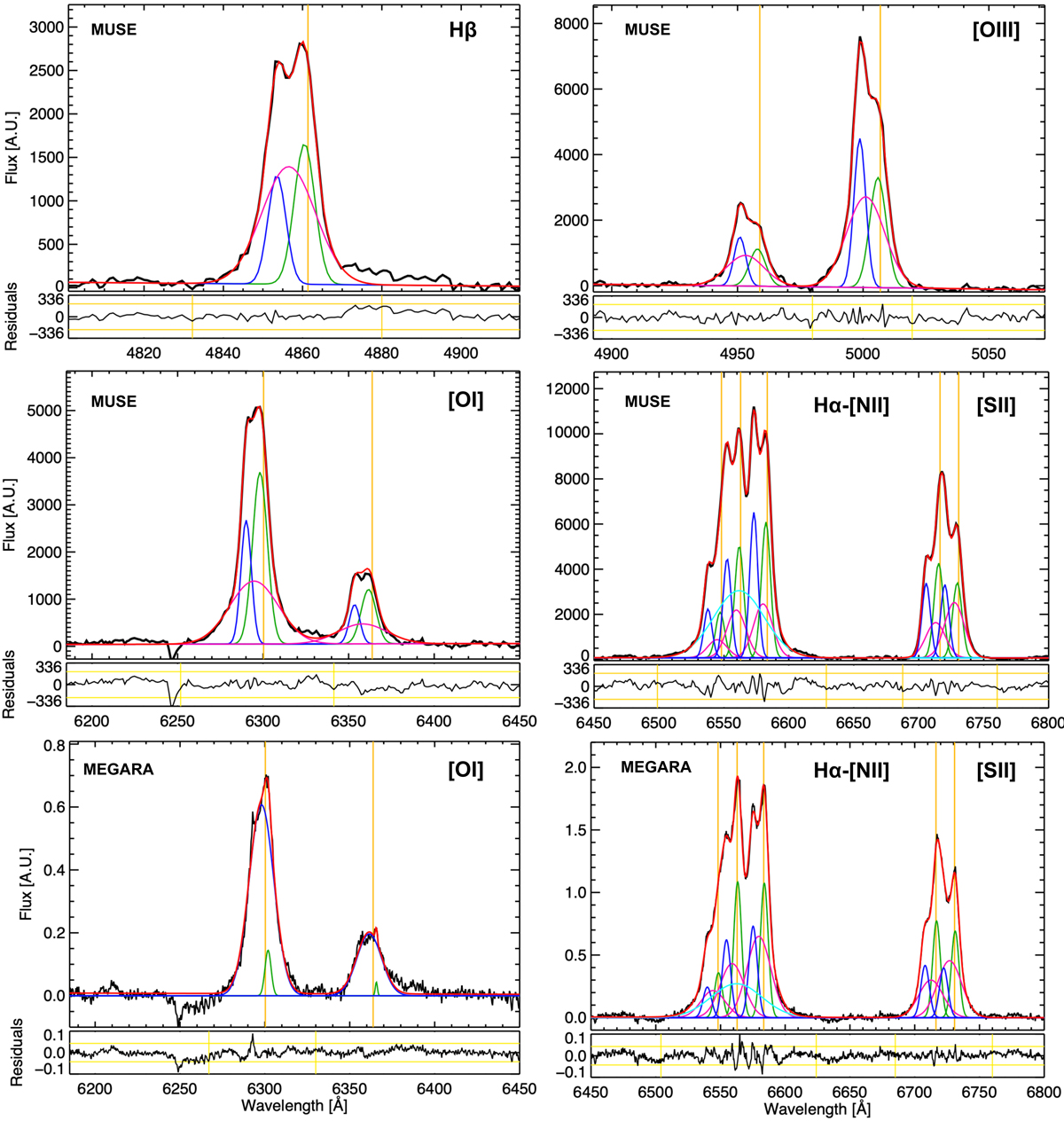Fig. 4.

Download original image
Examples of emission line spectra (black) after stellar subtraction (Sect. 3.2) and their modelling from the central region of both MUSE data (R = 0![]() 7, i.e. 77 pc) and MEGARA data (R = 0
7, i.e. 77 pc) and MEGARA data (R = 0![]() 9, i.e. 100 pc), as indicated top left. As references, the orange vertical lines give the systemic wavelengths of the emission lines which, are indicated top right. For each panel the modelled line profile (in red) and the components (in different colours) are shown. Specifically, the green, blue, and pink Gaussian curves indicate the primary, secondary, and tertiary components used to model the profiles. The cyan line indicates the broad Hα component from the BLR. Residuals from the fit are shown below each panels; the yellow horizontal lines indicate the ±2.5 εc (Sect. 3.3.1) and the vertical yellow lines give the wavelength range considered for calculating εfit for each line (Sect. 3.3.1). The high residuals redwards of Hβ cannot be fitted with a BLR component (the velocities and widths would be inconsistent with those of the broad Hα component), and are likely due to some residuals from stellar subtraction (Sect. 3.2).
9, i.e. 100 pc), as indicated top left. As references, the orange vertical lines give the systemic wavelengths of the emission lines which, are indicated top right. For each panel the modelled line profile (in red) and the components (in different colours) are shown. Specifically, the green, blue, and pink Gaussian curves indicate the primary, secondary, and tertiary components used to model the profiles. The cyan line indicates the broad Hα component from the BLR. Residuals from the fit are shown below each panels; the yellow horizontal lines indicate the ±2.5 εc (Sect. 3.3.1) and the vertical yellow lines give the wavelength range considered for calculating εfit for each line (Sect. 3.3.1). The high residuals redwards of Hβ cannot be fitted with a BLR component (the velocities and widths would be inconsistent with those of the broad Hα component), and are likely due to some residuals from stellar subtraction (Sect. 3.2).
Current usage metrics show cumulative count of Article Views (full-text article views including HTML views, PDF and ePub downloads, according to the available data) and Abstracts Views on Vision4Press platform.
Data correspond to usage on the plateform after 2015. The current usage metrics is available 48-96 hours after online publication and is updated daily on week days.
Initial download of the metrics may take a while.


